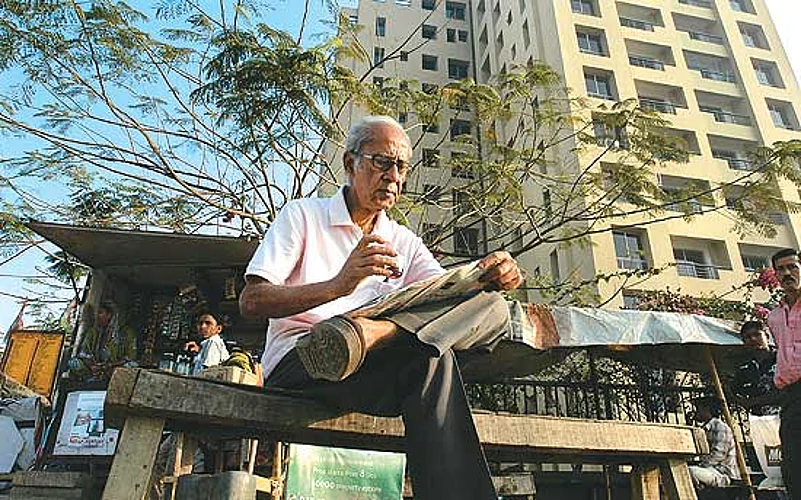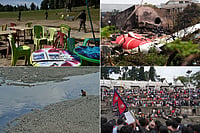After a couple of scary years, taxpayers got some good news in Budget 2010. But for many, life beyond the rising price line remains the biggest cause of concern. So, as an investor, what should your strategy be? This primer from Outlook Money should make clear how the budget proposals impact you—and will hopefully present a plan for life after Budget 2010.
Investment Advice
Insurance
Service Tax & Ulips Charges: Instead of paying a service tax on all the charges, you will now only have to pay a service tax towards the fund management charges which is restricted to Rs 1.35 for every Rs 100 invested.
Impact: With the service tax reduced, the amount that you invest will go up. So the returns from a larger invested amount go up as well. Insurance experts suggest that there could be an increase of about five per cent in the fund value.
Health Insurance Check Ups: The service tax applicable on the amount spent on health check-ups for employees at hospitals will mean that you will either have a lower coverage or your employer will have to pay more money towards the service.
Impact: Be prepared to increase your coverage individually or to pay a higher percentage to your employer as your contribution to health. Already, many employers are asking employees to share health insurance costs.
Cashless Tax: Providing cashless medical facilities is now a service, which attracts a tax provided it is paid directly from the insurance company to the hospital or nursing home. Any portion paid by the individual doesn't attract the service tax.
Impact: Either the insurance company passes on the burden of the tax to you, in which case your premium just went up by 10.3 per cent, or the coverage you are currently getting gets reduced somewhat.
Gold
More Expensive: Tucked in the budget proposal is a small hike in customs rates from Rs 200/10 grams to Rs 300/10 grams.
Impact: An increase in gold prices by Rs 100/10 grams. Gold etfs, which are mostly traded per gram, will spike up by Rs 10 per unit. If you are looking at gold as an investment, keep it to a maximum of 10 per cent of your portfolio and buy into gold exchange traded funds, as this eliminates the cost of storage.
Real estate
Impact: Higher prices for properties under construction. While ready-to-move properties were already at a premium compared to under-construction flats, the price gap is expected to go up further. Looking to buy a flat? Ready-to-move-in makes more sense.
Interest Subsidy: One per cent subsidy on a loan up to Rs 10 lakh for a property costing up to Rs 20 lakh.
Impact: Will help buyers in a house in tier-II and tier-III locations provided you have invested well and are able to generate 50 per cent of the property amount on your own.
IT Exemption: Extension of income tax exemption for housing projects by one year. These projects have to be sanctioned on or before March 31, 2008, and completed in 5 years. This will provide relief to the many projects delayed during the slump.
Stocks & MFs
Thanks to positive global cues and a budget that didn't surprise, the markets have generally been happy. Sectors like auto and pharmaceuticals will benefit from the increased weighted deduction on r&d spend. For auto, the negative impact from increased excise duty will be passed on to consumers. The excise duty and mat hike is negative for the cement sector, implying price increases as well as an impact on bottomlines. For fmcg companies, revised tax slabs should result in consumption. However, prices of certain goods will rise on account of the excise duty rollback. Banks see a positive impact, largely through the recapitalisation of weak psu banks and interest subvention.
Mutual funds: There are no specific tax announcements for the mutual fund industry so there's no real change in the way you allocate funds to this segment. However, given the impetus to infrastructure in the budget, thematic funds should look attractive.
Personal Taxes
Tax Slabs & Additional Investment Avenues
By expanding the tax slab, the finance minister has allowed more savings in the hands of people earning higher amounts of money. The tax slab revision has no benefit to people earning below Rs 3 lakh and a larger benefit to people earning above Rs 8 lakh (see table). Tax experts say that while this bodes well for the consumption story, it is actually counter-productive because it does not end up putting more money in the hands of low-income households.
Under 80CCF, the finance minister is allowing an additional investment avenue in the form of investments in long-term infrastructure bonds. The savings to those who have maximised their Rs 1-lakh limit under 80C could be around Rs 6,000. However, it remains to be seen what or which institutes issue these bonds, whether returns will be taxed, tied to a lock-in period and so on before one can ascertain the attractiveness of these bonds as a viable investment opportunity.

Ramya Kalyanram, 25, IT Professional, Bangalore
My investments: Currently paying Rs 2,000/month on a life insurance policy. Previously had made some lump sum investment in MFs. Am yet to pay off education loan.
My take on Budget 2010: The tax break is welcome, but it kind of evens out. Even as we save more on taxes, my expenses will go up. As it is prices are high, the increase in price of petrol and diesel will drive up costs both directly and indirectly. I feel the budget was more with the future in mind. All told, it was OK, in a long-term perspective.
| Men | |||
| Tax Liability (Rs) | |||
| Taxable Income (Rs lakh) | Present | Post-budget | Savings |
| 3 | 14,420 | 14,420 | 0 |
| 5 | 55,620 | 35,020 | 20,600 |
| 7 | 1,17,420 | 76,220 | 41,200 |
| 11 | 2,41,020 | 1,89,520 | 51,500 |
| 15 | 3,64,620 | 3,13,120 | 51,500 |
| 19 | 4,88,220 | 4,36,720 | 51,500 |
| Women | |||
| 3 | 11,330 | 11,330 | 0 |
| 5 | 52,530 | 31,930 | 20,600 |
| 7 | 1,14,330 | 73,130 | 41,200 |
| 11 | 2,37,930 | 1,86,430 | 51,500 |
| 15 | 3,61,530 | 3,10,030 | 51,500 |
| 19 | 4,85,130 | 4,33,630 | 51,500 |
| Senior Citizens | |||
| 3 | 6,180 | 6,180 | 0 |
| 5 | 47,380 | 26,780 | 20,600 |
| 7 | 1,09,180 | 67,980 | 41,200 |
| 11 | 2,32,780 | 1,81,280 | 51,500 |
| 15 | 3,56,380 | 3,04,880 | 51,500 |
| 19 | 4,79,980 | 4,28,480 | 51,500 |
| * For assessment year 2011-12; liability includes 3 per cent education cess | |||
Pensions
NPS For The Unorganised Sector
The one big idea in the budget is a form of social security network for India's large unorganised workforce. If an account is opened with the New Pension Scheme in 2010-11, with a minimum annual contribution of Rs 1,000 up to a maximum of Rs 12,000, the government promises to supplement the amount by Rs 1,000 for three years. The FM has also asked the states to come forward to match this amount. For a scheme that has not had a great start so far (and we're being kind here), the budget proposal is likely to provide a much-needed boost to NPS. More importantly, this is one target audience—estimated at over 400 million—that really needs a nest egg.

Subhash Chakraborty, 72, retired executive, Calcutta
My investments: Fixed-income instruments like bank fixed deposits and post-office monthly income scheme.
My take on Budget 2010: Disappointing. There's nothing for senior citizens. Tax slab benefits are only meant for higher-income categories. With interest rates on fixed-income investments coming down, the government could be encouraging equity savings. But is it possible for us to invest in equities at this stage of our lives? As far as controlling the price rise is concerned, no definite measures have been taken. Since India is an agricultural country, there should have been incentives given so that food prices are kept in check.
Year Gone By, Financially
| Feb 2010 | Feb 2009 | |
| Savings rate (%) | 32.5 | 36.4 |
| Inflation* (WPI, in %) | 8.56 | 4.95 |
| Food inflation* (%) | 17.43 | 11.02 |
| Sensex | 7,000 | 8,891 |
| Vegetable prices (Rs/kg) | ||
| Potato | 9 | 6 |
| Onion | 24 | 17 |
| Foodgrains prices (Rs/kg)1 | ||
| Rice | 23 | 22 |
| Wheat | 15 | 13 |
| Atta | 17 | 15 |
| Sugar | 43 | 25 |
| Tur Dal | 77 | 51 |
| Moong Dal | 79 | 46 |
| Gold (per 10 gm) | 16,815 | 15,400 |
| LPG cylinder prices2 | 281.2 | 297.7 |
| Car (Maruti Alto LXi ex- showroom Delhi in Rs lakh) | 2.81 | 2.75 |
| Real estate (per sq ft)3 | 2,800 | 2,800 |
| EMI per lakh4 | 806 | 884 |
| Note: * Inflation figures are for January. 1: Retail prices in Delhi; 2: Price of Indane Gas (14.2 kg) in Delhi, 3: Price per sq ft for 2 BHK house in (Ambattur) Chennai, 4: Lowest EMI for floating home loan of 20 years Sources: Office of Economic Advisor, Ministry of Consumer Affairs, IOC | ||
Disclaimer: Outlook and Outlook Money do not accept responsibility for any investment decision taken by readers on the basis of information given here. The objective is to keep readers better informed and help them decide for themselves.


























